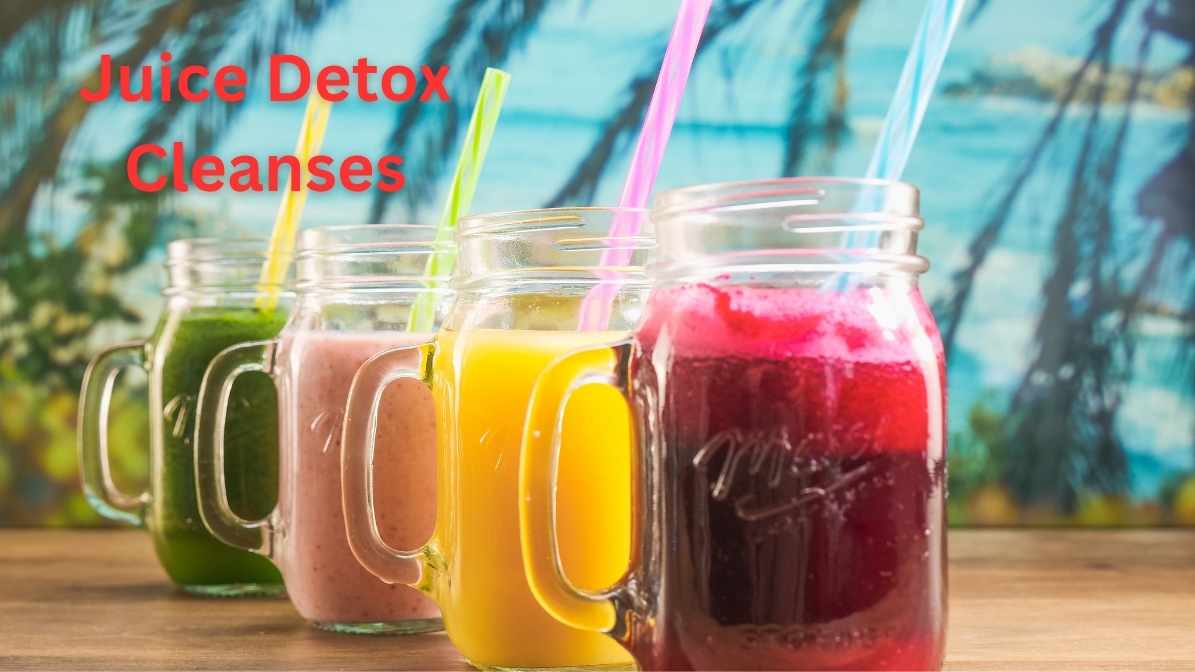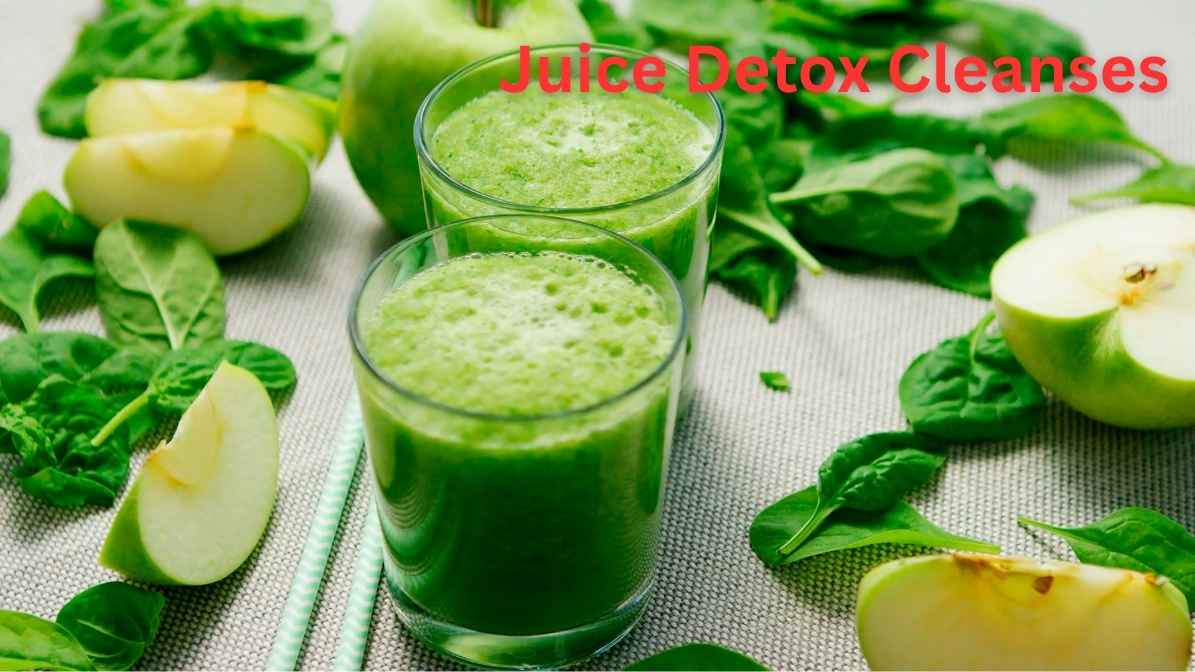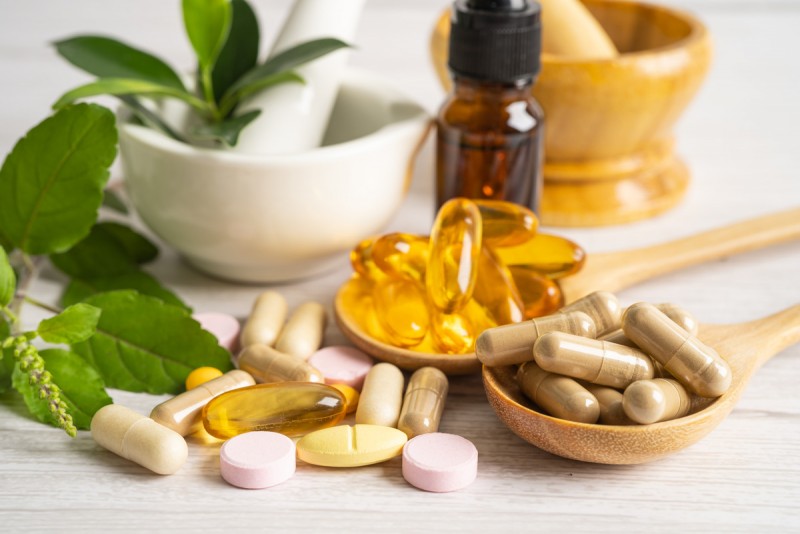Introduction:
Understanding Juice Detox Cleanses. Juice detox cleanses have become highly popular in recent times as many people are looking for a way to reset their system and improve their overall health. But what is a juice detox, and does it actually work?
And in this thorough guide, we’ll take you through absolutely everything you need to know about juice cleansing — including the science behind it and the practical how-tos to do it, well, safely.
Table of Contents
Juice Detox Diet A juice detox diet may last anywhere from a day to a week. The goal is to give your digestive system a break while providing your body with abundant nutrition.
Some people swear by them, but other remain skeptical of the effectiveness of these cleanses, or question if they are just another health fad.

In this guide, we’ll explore Juice Detox Cleanses:
– The science behind juice detoxification
– Potential benefits and risks
– How to prepare for and complete a cleanse
– What to expect during and after
– Alternative approaches to detoxification
Whether you’re considering your first cleanse or seeking to optimize your approach, this article provides the information you need to make informed decisions about juice detoxing.
What Is a Juice Detox Cleanse?
A juice detox cleanse is a short-term dietary regimen where participants consume only freshly pressed fruit and vegetable juices, along with water and sometimes herbal teas.
These cleanses typically last anywhere from one day to seven days, with three days being one of the most common durations.
The Basic Concept Juice Detox Cleanses
The fundamental idea behind juice cleansing is twofold:
1. Reducing Digestive Load: By consuming only liquids, your digestive system gets a break from processing solid foods, which theoretically allows your body to focus its energy on other processes, such as detoxification and repair.
2. Nutrient Boosting: Fresh juices provide concentrated amounts of vitamins, minerals, and phytonutrients that might be harder to obtain in such quantities from solid foods alone.
Types of Juice Detox Cleanses
There are several approaches to juice detoxing:
1. All-Juice Cleanses: Consuming only juice with no solid food
2. Juice-and-Smoothie Cleanses: Incorporating blended drinks with fiber
3. Modified Cleanses: Including some raw fruits/vegetables or light meals
4. Commercial vs. Homemade: Pre-made juice programs versus making your own
Historical Context Of Juice Detox Cleanses
While juice cleansing may seem like a modern trend, the concept has its roots in ancient healing traditions. Many cultures have used liquid diets or fasting as part of cleansing rituals.
The modern juice cleanse movement gained popularity in the 1990s and has evolved with our growing understanding of nutrition.
How Juice Detoxification Works: The Science Behind Cleansing
To understand whether juice detoxes work, we need to examine what “detoxification” actually means from a biological perspective.
The Body’s Natural Detox Systems
Your body already has highly efficient detoxification systems:
1. Liver: Processes and neutralizes toxins
2. Kidneys: Filter waste from blood
3. Lungs: Expel gaseous waste
4. Skin: Releases toxins through sweat
5. Digestive System: Eliminates waste products
These systems operate continuously to maintain your body’s cleanliness and optimal functioning.
How Juice Cleanses Support Detoxification?
While juice cleanses don’t “detox” your body in the way some marketing claims suggest, they may support natural detox processes by:

1. Reducing Toxin Intake: Eliminating processed foods, alcohol, and caffeine
2. Providing Nutrients: Delivering antioxidants and phytochemicals that support liver function
3. Promoting Hydration: High water content in juices supports kidney function
4. Resting the Gut : Giving the digestive system a break from processing solid foods
What Research Says About Juice Detox Cleanses
Scientific studies on juice cleanses specifically are limited, but research suggests:
– Short-term juice fasting may increase antioxidant levels
– Some people experience improved biomarkers like cholesterol
– Weight loss occurs but is mostly water weight
– There’s little evidence that cleanses remove more toxins than the body already does naturally
Potential Benefits of Juice Detox Cleanses
While the scientific evidence is mixed, many people report positive experiences with juice cleanses. Here are some potential benefits:
1. Increased Nutrient Intake
Fresh juices provide concentrated amounts of:
– Vitamins (especially C and some B vitamins)
– Minerals (like potassium and magnesium)
– Antioxidants (such as flavonoids and carotenoids)
– Enzymes (in raw, unpasteurized juices)
2. Digestive System Reset
By giving your digestive system a break from:
– Processing fiber
– Breaking down complex proteins
– Digesting fats
Many people report reduced bloating and improved digestion after completing the cleanse.
3. Mental Clarity and Focus
Some cleansers experience:
– Improved concentration
– Reduced brain fog
– Increased mindfulness about eating habits
4. Weight Loss (Short-Term)
While not a long-term weight loss solution, you may lose:
– Water weight
– Some fat if in a calorie deficit
– Bloating-related pounds
5. Improved Energy Levels
After initial adjustment, many report:
– More stable energy throughout the day
– Reduced post-meal fatigue
– Better sleep quality
6. Skin Health Improvements
The Hydration and nutrients in juices may lead to:
– Clearer complexion
– Reduced acne
– Improved skin elasticity
Risks and Potential Side Effects of Juice Detox Cleanses
While juice cleanses can have benefits, they’re not without risks. It’s essential to be aware of potential downsides:

1. Nutrient Deficiencies
Juices often lack:
– Adequate protein
– Healthy fats
– Certain minerals like zinc and iron
2. Blood Sugar Spikes
Fruit-heavy juices can cause:
– Rapid blood sugar increases
– Subsequent crashes
– Problems for diabetics or prediabetics
3. Fatigue and Weakness
Common symptoms include:
– Low energy (especially in the first few days)
– Dizziness
– Headaches (often from caffeine withdrawal)
4. Digestive Issues
Some experience:
– Diarrhea (from sudden high liquid intake)
– Constipation (from lack of fiber)
– Increased hunger
5. Unsustainable Results
Potential pitfalls:
– Weight often returns after the cleanse ends
– Doesn’t teach long-term healthy eating habits
– Can lead to binge eating post-cleanse
Who Should Avoid Juice Detox Cleanses?
Certain groups should avoid or modify juice cleanses:
– Pregnant or breastfeeding women
– People with diabetes
– Those with eating disorders
– Individuals with kidney problems
– People on certain medications
Always consult a healthcare provider before starting a cleanse, especially if you have any medical conditions.
How to Prepare for a Juice Detox Cleanse
Proper preparation can make your cleanse more effective and comfortable. Here’s how to get ready:
1. Choose Your Cleanse Duration
Options include:
– 1-Day Cleanse (suitable for beginners)
– 3-Day Cleanse (most popular)
– 5-7 Day Cleanse (for experienced cleansers)
2. Select Your Approach
Decide between:
– All-juice (most intense)
– Juice plus smoothies (adds some fiber)
– Modified cleanse (includes some solids)
3. Gather Equipment
You’ll need:
– Quality juicer (cold-press preferred)
– Glass storage containers
– Produce wash
– Grocery list of organic fruits/vegetables
4. Prepare Your Body
3-5 Days Before:
– Reduce caffeine and alcohol
– Eliminate processed foods
– Increase raw fruits/vegetables
– Drink more water
5. Plan Your Schedule
Best times to cleanse:
– When you can rest (weekends or time off)
– Avoid during stressful periods
– Not around major events or holidays
6. Mental Preparation
Get ready by:
– Setting clear intentions
– Informing friends/family
– Preparing for possible detox symptoms
Step-by-Step Guide to Doing a Juice Detox Cleanses
Now let’s walk through how actually to do a juice cleanse:
Day Before Cleanse
– Eat light meals (salads, soups)
– Avoid alcohol and caffeine
– Prepare your first day’s juices
– Get plenty of sleep

Sample 3-Day Juice Detox Cleanses Plan
**Day 1: Gentle Start**
– Morning: Green juice (kale, cucumber, apple, lemon)
– Mid-Morning: Carrot-ginger juice
– Lunch: Beet-apple-lemon juice
– Afternoon: Green juice with celery
– Dinner: Cucumber-mint juice
– Evening: Chamomile tea
Day 2: Deep Cleanse
– Morning: Spinach-pineapple juice
– Mid-Morning: Lemon-ginger-turmeric shot
– Lunch: Red juice (beet, carrot, apple)
– Afternoon: Green juice with parsley
– Dinner: Celery-cucumber-apple juice
– Evening: Herbal tea
Day 3: Replenish
– Morning: Green juice with wheatgrass
– Mid-Morning: Citrus juice (orange, lemon, ginger)
– Lunch: Green juice with avocado (blended)
– Afternoon: Carrot-apple juice
– Dinner: Light green juice
– Evening: Herbal tea
Daily Routine During Cleanse
– Drink juice every 2-3 hours
– Consume at least six juices per day
– Drink plenty of water between juices
– Rest when needed
– Light exercise only (yoga, walking)
Managing Side Effects
For common issues:
– Headaches: Try peppermint tea, more water
– Hunger: Drink more juice or herbal tea
– Fatigue: Rest, reduce activity
– Dizziness: Add a pinch of sea salt to the juice
Breaking the Cleanse: Transitioning Back to Solid Foods
How you end your cleanse is just as important as the cleanse itself. Here’s how to transition properly:
Day 1 Post-Cleanse
– Start with easily digestible foods:
– Fresh fruits
– Vegetable soups
– Smoothies (with some fiber)
– Continue drinking some juices
– Avoid heavy, processed foods
Day 2 Post-Cleanse
– Add in:
– Steamed vegetables
– Small amounts of healthy fats (avocado, nuts)
– Plant-based proteins (lentils, quinoa)
– Continue avoiding:
– Dairy
– Meat
– Processed foods
– Caffeine/alcohol
Day 3 Post-Cleanse
– Gradually reintroduce:
– Whole grains
– Lean proteins
– Healthy fats
– Pay attention to how foods make you feel
– Continue drinking plenty of water
Maintaining Benefits Long-Term
To extend cleanse benefits:
– Incorporate daily green juices or smoothies
– Increase raw fruit/vegetable intake
– Reduce processed foods
– Stay hydrated
– Practice mindful eating
Juice Cleanse Recipes for Detoxification
Having the right juice recipes can make your cleanse more effective and enjoyable. Here are some proven combinations:
Green Juices (Alkalizing)
1. Basic Green
– 2 cucumbers
– 4 celery stalks
– 2 green apples
– 1 lemon (peeled)
– 1-inch ginger
2. Spinach Power
– 2 cups spinach
– 1 cucumber
– 2 green apples
– 1 lime (peeled)
– 1/2 inch turmeric
Root Vegetable Juices (Liver Support)
1. Beet Cleanse
– 1 medium beet
– 3 carrots
– 1 apple
– 1-inch ginger
– 1/2 lemon
2. Carrot Boost
– 6 carrots
– 1 orange (peeled)
– 1 inch turmeric
– Dash of cinnamon
Citrus Juices (Immune Support)
1. Sunshine Juice
– 3 oranges (peeled)
– 1 grapefruit (peeled)
– 1 lemon (peeled)
– 1-inch ginger
2. Lemon Aid
– 2 lemons (peeled)
– 1 green apple
– 1 cucumber
– Handful of mint
Specialty Juices
1. Liver Flush
– 1 beet
– 1 cup dandelion greens
– 1 green apple
– 1/2 lemon
– 1 inch turmeric
2. Skin Glow
– 2 cups watermelon
– 1 cucumber
– 1 lime
– Handful of mint
Common Juice Cleanse Mistakes to Avoid
Many people undermine their cleanse results by making these common errors:
1. Drinking Too Much Fruit Juice
– Leads to blood sugar spikes
– Provides excess calories
– Lacks nutrient diversity
Solution: Aim for 80% vegetables, 20% fruit in juices
2. Not Drinking Enough Juice
– Causes extreme hunger
– Leads to fatigue
– May trigger binge eating
Solution: Consume at least 4-6 juices daily (about 16-24 oz each)
3. Continuing Normal Activity Levels
– Increases fatigue
– Can cause dizziness
– Reduces cleanse effectiveness
Solution: Scale back exercise, get extra rest
4. Neglecting Hydration
– Juices alone may not provide enough fluids
– Can lead to headaches
– Slows detoxification
Solution: Drink at least 64 oz water between juices
5. Poor Post-Cleanse Transition
– Wastes benefits
– Can shock the system
– Causes digestive upset
Solution: Follow the 3-day reintroduction plan
Alternatives to Traditional Juice Cleanses
If a full juice cleanse seems too intense, consider these modified approaches:
1. Smoothie Cleanse
– Includes fiber
– More filling
– Easier transition
– 2-3 juices daily plus:
– Raw fruits/vegetables
– Light soups
– Nuts/seeds
3. Intermittent Fasting with Juices
– Time-restricted eating (e.g., 16:8)
– Include juices in the eating window
– More sustainable long-term
4. One-Meal-a-Day Juice Replacement
– Replace just one meal daily with juice
– Gradually increase if desired
– Less disruptive to routine
5. Weekend Cleanse
– Just 1-2 days weekly
– Easier to schedule
– Less intense
Frequently Asked Questions About Juice Cleanses
Let’s address some common concerns:
Q: How often should I do a juice cleanse?
A: For most people, 1-2 times per year is sufficient for a multi-day cleanse. Monthly 1-day cleanses can be beneficial.
Q: Can I exercise during a cleanse?
A: Light exercise, such as yoga or walking, is fine. Avoid intense workouts that require more fuel than juices provide.
Q: Will I feel hungry?
A: Some hunger is normal, especially in the first few days. Drinking juices regularly and staying hydrated helps manage hunger.
Q: Are store-bought juices okay?
A: Fresh is best. When buying pre-made, look for cold-pressed, unpasteurized juices with no added ingredients.
Q: How much weight will I lose?
A: Typically 3-7 pounds, mostly water weight. Sustainable weight loss requires long-term changes to your diet.
Q: Are there any medical tests before cleansing?
A: If you have health concerns, consult your doctor. They may check blood sugar, kidney function, or nutrient levels.
Conclusion:
Is a Juice Cleanse Right for You?
Juice detox cleanses can be a valuable tool for resetting eating habits, increasing nutrient intake, and giving your digestive system a break. However, they’re not a magic solution for weight loss or detoxification – your body already has efficient systems for removing toxins.
The most successful cleansers are those that:
– Prepare properly before starting
– Choose appropriate duration and recipes
– Listen to their body’s signals
– Transition back to solid foods gradually
– Use the cleanse as a springboard to healthier habits
If you’re considering a juice cleanse, start small with a 1-day version to see how your body responds. Remember that sustainable health comes from consistent, balanced eating rather than extreme short-term measures.
For many people, incorporating periodic juice cleanses (one to three times per year) along with daily healthy habits provides the right balance of cleansing and nourishment.
Whatever approach you choose, focus on nourishing your body with quality ingredients and listening to its needs.



